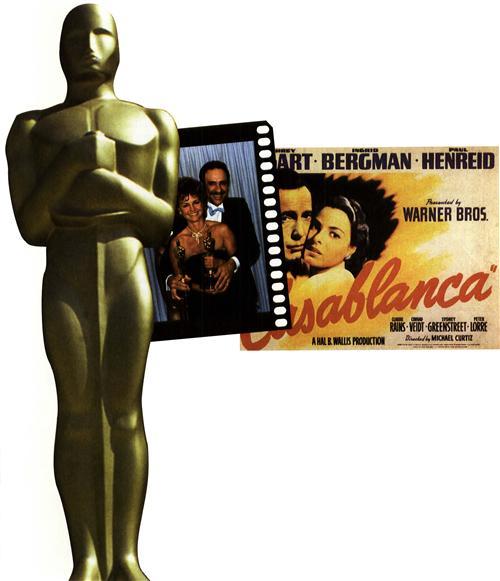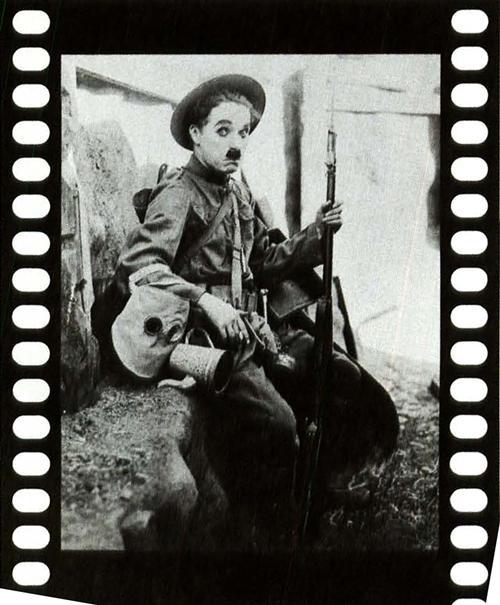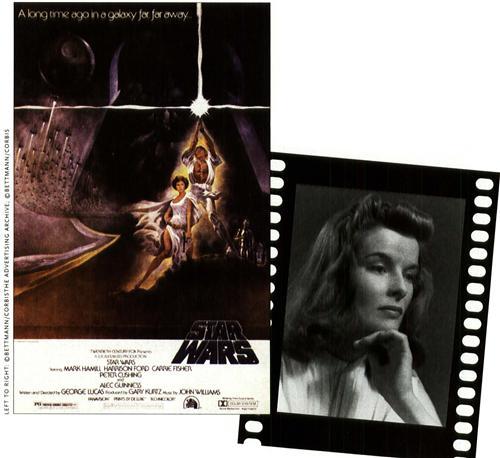
We all have our favorite Oscar moments. Who could forget Sally Field’s “You like me. You really like me!” acceptance speech? Or the streaker who surprised us all at the 46th Academy Awards in 1974? Then there are the more heart-touching moments, such as John Wayne’s farewell appearance at the 1979 ceremony. Those fond memories and our celebrity-crazed curiosity keep us tuning in to the awards year after year. This year, in fact, marks the 75th time that Oscar has been handed out to honor the movies’ best.
It’s difficult to imagine the Academy Awards without the gossip, suspense and hype surrounding the event today — much less without being able to watch it on television. But the Oscars didn’t always get so much attention.
The first awards ceremony, on May 16, 1929, was a modest banquet affair that took place virtually unnoticed by the public. The Blossom Room of the Hollywood Roosevelt Hotel hosted a mere 250 attendees. Tickets sold for the bargain price of $10, and the suspense was even less: The winners had been revealed months before. (The sealed envelope wouldn’t become a staple of the awards until 1941.) The Broadway Melody, a musical, won for best picture, an indication that silent movies were fading from the screen. Charlie Chaplin did, however, win an honorary Oscar for his artistic genius as a silent-film actor.
Back then, the golden prize awarded to winners wasn’t even called Oscar. The award, made of 24-karat-gold-plated britannium, had several names — “Academy statuette,” “golden trophy” or “statue of merit.” No one is certain how the name “Oscar” came about, but the accepted story is that Margaret Herrick, an Academy librarian, remarked that the statuette resembled her uncle Oscar. A member of the media, standing within earshot, picked up the name, and the rest is history. The academy recognized “Oscar” as the trophy’s official nickname in 1939.
As Oscar entered the war years in the 1940s, going to the movies was a popular American pastime, making that period one of the most lucrative in Hollywood history. Winners during that time were among some of the most famous films ever made. Casablanca, starring Humphrey Bogart and Ingrid Bergman, won for best picture at the 1944 awards. But Citizen Kane, now regarded as perhaps the greatest movie of all time, snatched only one Oscar, for original screenplay, at the 1942 ceremony — beaten out for best picture by How Green Was My Valley. During the war years, winners took home plaster Oscars, symbolic of the movies’ support for conservation efforts. After the war ended, they received standard-issue golden Oscars.
In the 1950s, television brought the awards ceremony into America’s living rooms. NBC carried the first televised ceremony, the 25th Academy Awards in 1953, with Bob Hope as master of ceremonies. That night, The Greatest Show on Earth won for best picture. The following year, films with a World War II focus received attention: From Here to Eternity snagged best picture, and William Holden won for best actor in Stalag 17. Historical epics dominated the rest of the decade — Ben Hur, released in 1959, made quite a showing at the 1960 ceremony by winning 11 Oscars.
A changing social climate and technological advancements affected movies in the decades to come. In the midst of the Civil Rights Movement, Sidney Poitier became the first African-American to win an Oscar, paving the way for last year’s big winners — Halle Berry and Denzel Washington. Poitier’s performance in Lilies of the Field earned him the best-actor award in 1964.
In the 1970s, the “Movie Brats” took over the awards: Francis Ford Coppola, Brian De Palma, George Lucas, Martin Scorsese and Steven Spielberg. The Godfather, Part II won in 1975, but Star Wars couldn’t turn its record-breaking box office sales into a best-picture statuette: It lost to Annie Hall in 1978.
Touching, sentimental movies were favorites at the Academy Awards in the 1980s. Who could forget Driving Miss Daisy, Terms of Endearment, Rain Man and Sophie’s Choice?
But the next decade in Academy Awards’ history seemed to be ruled by big-budget blockbusters. Silence of the Lambs took home five Oscars — best actor and actress, best director, best picture and best adapted screenplay — at the 1992 awards. Other movies to clean up in the 1990s were Schindler’s List, Forrest Gump, Braveheart and, of course, Titanic.
Winners in the new millennium have ranged from the brawny Gladiator to the cerebral A Beautiful Mind, from Russell Crowe to, well, Russell Crowe. The 75th Academy Awards are Sunday, March 23, 2003, at the Kodak Theatre. If you can’t wait to feed your Oscar cravings, visit the Web sites on the previous page for more history, information on the nominees and critics’ predictions of who will steal the show.
From Family Tree Magazine‘s March 2003 America’s Scrapbook.






